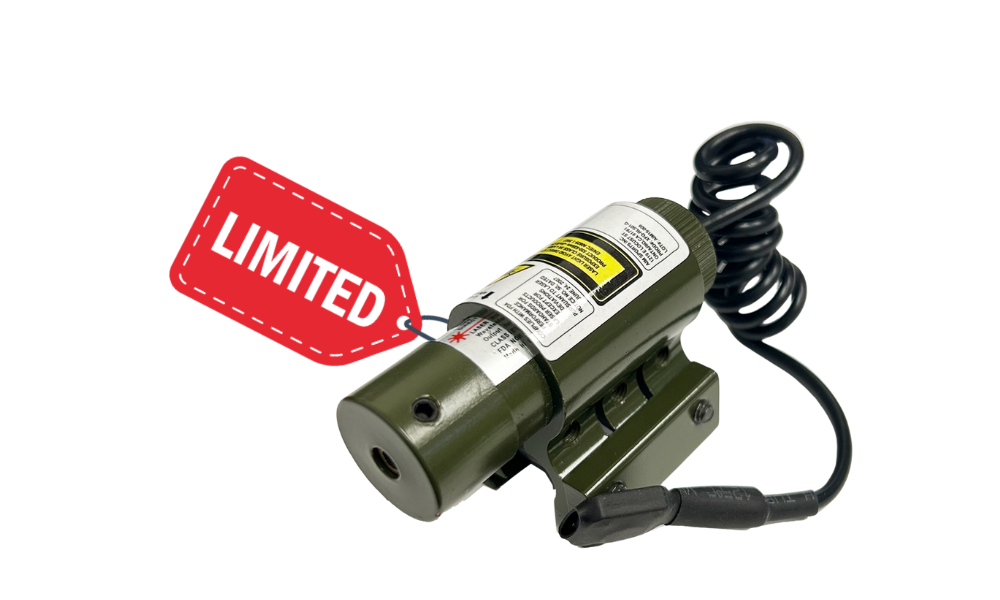Feb 25th 2025
How to Zero Your Rifle Scope: A Step-by-Step Guide
When you first get a new scope for your rifle, one of the most important tasks is to "zero" it. Zeroing refers to adjusting the scope so that your point of impact (POI) matches the point of aim (POA) at a specific distance. It’s crucial for accuracy and ensures your shots hit where you intend. If you're new to this process, don’t worry. In this guide, we’ll walk you through the steps to properly zero your scope.
Why is Zeroing Important?
Zeroing ensures that the reticle (crosshairs) in your scope aligns with where the bullet will actually land at a designated distance. This is important whether you're hunting, target shooting, or preparing for competitive events. Without a proper zero, your shots will be inconsistent, which can be frustrating and ineffective.
What You Need
Before you start, make sure you have the following:
- Rifle with a mounted scope
- A stable shooting rest or bench
- A target at the desired zeroing distance
- A safe location to shoot (ideally an outdoor range)
- A tool for adjusting the turrets (typically a coin or a turret tool)
- A spotting scope or binoculars to view your target
Step 1: Set Up Your Rifle and Scope
Start by securely mounting your scope on your rifle. Make sure it’s level and tightened properly. Use a stable shooting rest to ensure your rifle stays steady during the process. The more consistent you are, the better the results will be.
Step 2: Choose a Zeroing Distance
The most common distance for zeroing is 100 yards, but this can vary depending on your rifle, ammunition, and intended use. Some long-range shooters prefer to zero at 200 or even 300 yards. For hunting, a 50-yard zero might be more appropriate for closer shots.
Step 3: Bore-Sighting Your Rifle
Bore-sighting is a simple way to get your scope roughly aligned with the barrel of your rifle before you take your first shot. You can use a bore-sighting tool, or if you don’t have one, you can do it visually:
- Remove the bolt from your rifle (if applicable).
- Look down the bore of the rifle while keeping it pointed at the target.
- Adjust the scope until the reticle is roughly aligned with the center of the target.
This step doesn’t need to be perfect but will help you avoid wasting ammo on shots that are too far off.
Step 4: Take Your First Shot
Load a round and take a shot at the target. Don’t worry about the exact placement just yet – the goal is to see where the bullet impacts in relation to your point of aim.
Step 5: Analyze the Shot
Using your spotting scope or binoculars, locate the point of impact (POI). If your shot is off-center, you’ll need to adjust the windage (left/right) or elevation (up/down) settings on your scope.
Step 6: Adjust the Scope
To adjust the scope, use the turrets. Most scopes will have two knobs: one for windage (horizontal adjustments) and one for elevation (vertical adjustments). The turret adjustments are typically in MOA (minutes of angle) or MIL (milliradians).
- Windage: If your shot went left or right of the target, adjust the windage knob to move the reticle in the opposite direction of the shot.
- Elevation: If your shot went high or low, adjust the elevation knob accordingly.
After each adjustment, fire another shot.
Step 7: Repeat the Process
Continue adjusting the scope until your shot lands at the desired POA. Make small adjustments as you go to avoid overcompensating. Once you're happy with your shot placement, you're zeroed!
Step 8: Confirm the Zero
Once you’ve adjusted the scope to hit the target at the desired distance, fire a few more shots to ensure the zero is consistent. If the shots are grouping together tightly and hitting the target where you want, you’ve successfully zeroed your rifle.
Tips for Success
- Take your time: Don’t rush through the process. Small, incremental adjustments are key to achieving the best zero.
- Recheck your mounting: If your shots aren’t grouping well or seem random, double-check that your scope is securely mounted.
- Use high-quality ammunition: Inconsistent ammo can lead to erratic results, so use reliable and consistent rounds when zeroing.
- Keep the same shooting position: Consistency is key. Try to keep your position, trigger pull, and breathing consistent for each shot.
Final Thoughts
Zeroing your rifle scope is an essential step in ensuring your rifle performs accurately. With a little patience and practice, you’ll be able to dial in your scope and improve your shooting accuracy. Once your rifle is zeroed, it’s a good idea to regularly check your zero, especially if you change ammunition or make adjustments to your rifle.
At ShootersGate, we offer a wide selection of scopes, mounting accessories, and other gear to help you achieve peak performance. If you’re looking for more tips or gear recommendations, don’t hesitate to reach out to our experts!

